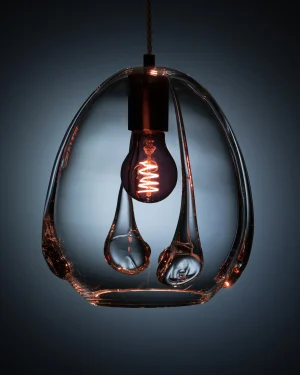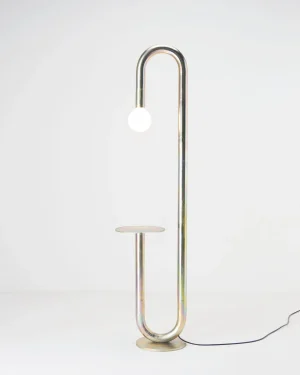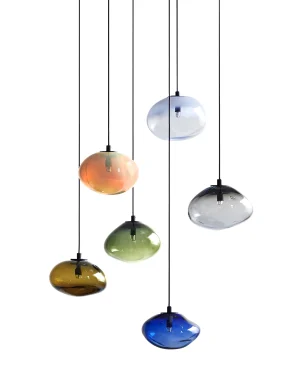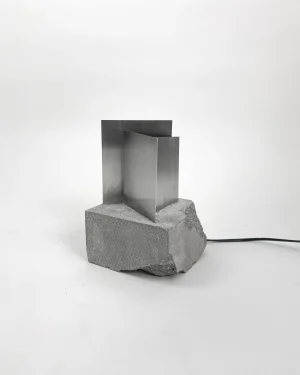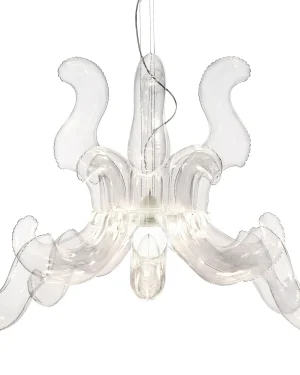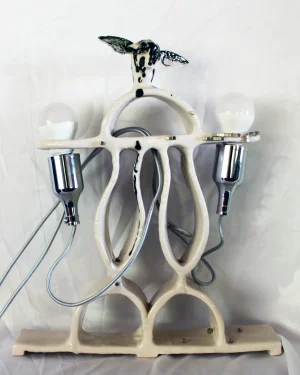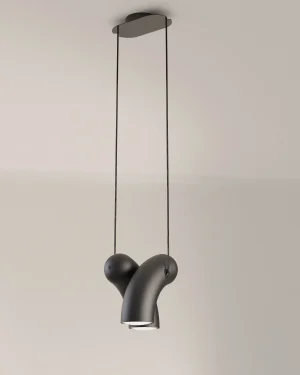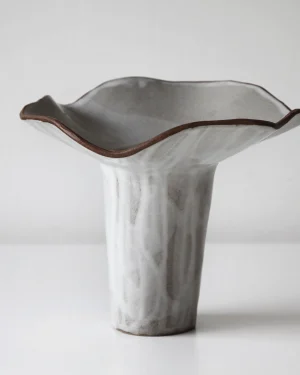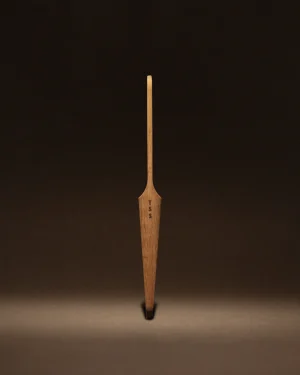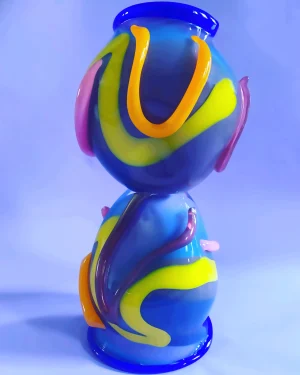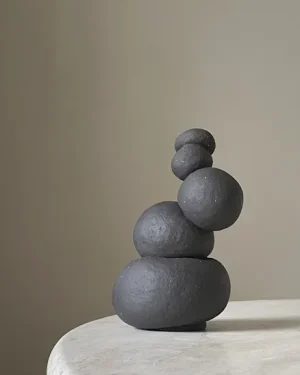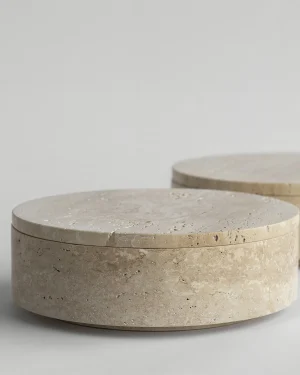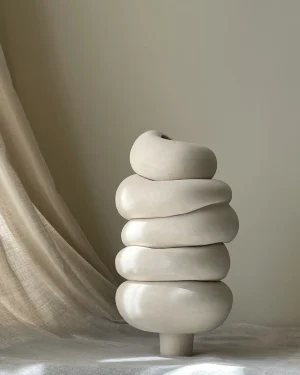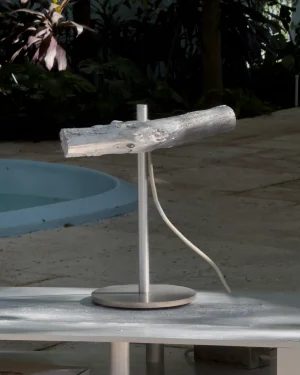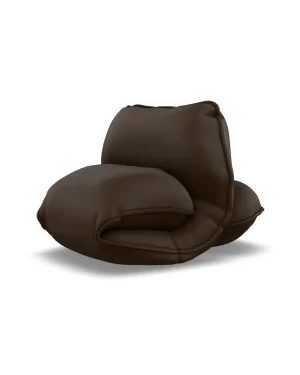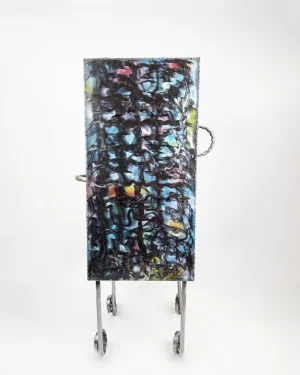It is a long honoured and recurring tradition of artistic practice to salvage and repurpose discarded and common use objects. For Sander Wassink it is an attempt to infuse value and appreciation for the humble and mundane things in life. The lamp Bucket Spilling the Sky developed out of a photographic project in which mirrors were cut to fit into daily, discarded objects. The objects were then photographed outside on sunny days, to look as if they had stolen a patch of sky. Later some of these objects were transformed into lights projecting drawings of the sky. By bringing the sky into a room we are letting in a tiny bit of the outside world, playing with the norms that regulate inside and outside, natural or artificial. A spilled bucket is a nuisance, a small accident that disrupts efficiency and order and perhaps by allowing irreverent objects in our home we become more accepting of a little wildness.
Sander Wassink, whose installation “Please Take Off Your Shoes” was presented at his spacious studio, discovered drawing as a liberating force. After experiencing some difficulties during projects, he turned to drawing to give him the freedom that would satisfy him and would also take off any pressure that he was feeling, bogged down by the practicalities of a design project. The work he showed consisted of some existing and new work brought to life by this newfound liberation. He has also started implementing this methodology in his interior design projects.
A cornerstone of the exhibition was a large carpet created from the leftover pieces sourced from Dutch company Desso Tarkett. He wanted the carpet to slow people down and take a moment to have a conversation or just be willing to embark on a new experience. This choice coincides with Wassink’s way of working with found materials, waste or leftover products, and by combining these, creating something new.
| Dimensions LxWxH | 80x40x40cm (31x16x16'') |
|---|---|
| Piece Weight (kg) | 8 |
| Material | |
| Production Year | |
| Color |







